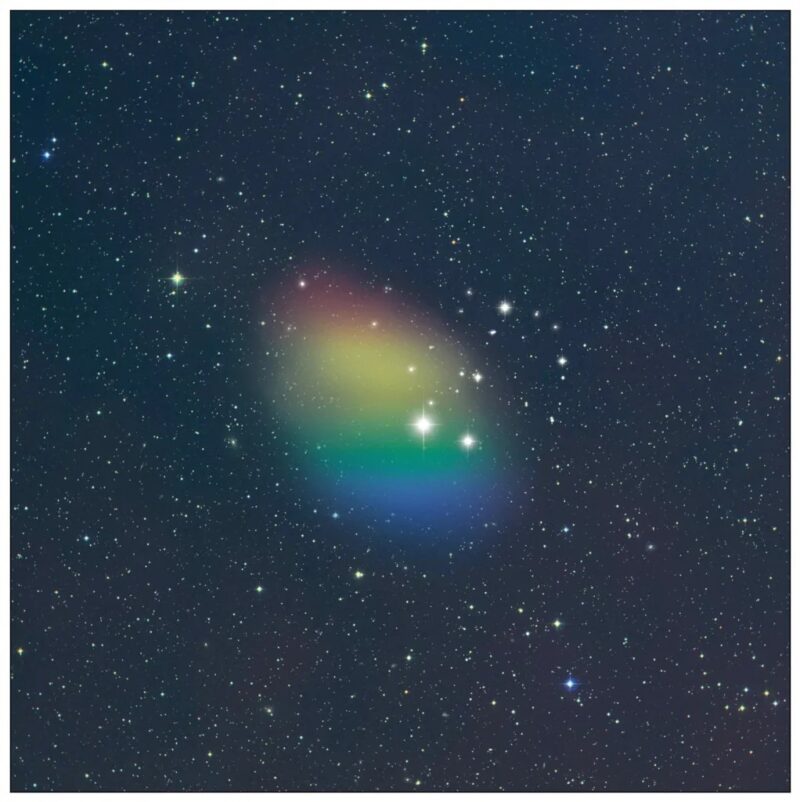
The rainbow-colored light is an artist’s concept of a galaxy without stars called J0613+52. The stars in this image are foreground stars, in our own Milky Way galaxy, from an actual starfield from the Palomar Sky Survey II. Illustration via NSF/ NRAO/ AUI/ P.Vosteen/ Green Bank Observatory.
Just when scientists think they have seen it all, the Universe surprises them again.
At the January 8, 2024 annual meeting of the American Astronomical Society, astronomers from the Green Bank Observatory in West Virginia announced they’ve found a galaxy completely devoid of stars.
What? Aren’t galaxies giant clusters of stars by definition? Granted, they also have gas, dust and dark matter, but stars, with their attendant planetary systems, are supposed to be the main attraction.
Even stranger, this anomaly was found by accident. Astronomers were using a world-wide network of radio telescopes, including Green Bank, to survey some 350 low-surface-brightness galaxies. The goal, as explained by the Green Bank Observatory’s senior scientist, Karen O’Neil, “…was to determine the gas and dynamic masses of these ultra-diffuse galaxies. To do this, we observed them from several instruments, and many of them more than once.”
But they noticed a data discrepancy. And when they reexamined, they realized “The Green Bank Telescope was accidentally pointed to the wrong coordinates and found this object. It’s a galaxy made only out of gas … it has no visible stars. Stars could be there, we just can’t see them,” O’Neil said.
Given the poetic name J0613+52, it’s not like other galaxy they’ve observed before. While there’s still much to learn about it, O’Neill described what they’ve discovered so far: “What we do know is that it’s an incredibly gas-rich galaxy. It’s not demonstrating star formation like we’d expect, probably because its gas is too diffuse. At the same time, it’s too far from other galaxies for them to help trigger star formation through any encounters. J0613+52 appears to be both undisturbed and underdeveloped. This could be our first discovery of a nearby galaxy made up of primordial gas.”
Learning more could help astronomers understand the evolution of galaxies in general. But J0613+52’s low surface density might make it impossible to observe at other wavelengths. Maybe to learn more, they’ll have to find more starless galaxies like it.
Stay tuned.
Taken from “Astronomers Find a Galaxy Without Stars by Accident” by Kelly Kizer Whitt (https://earthsky.org/space/galaxy-without-stars-j061352-green-bank/)
